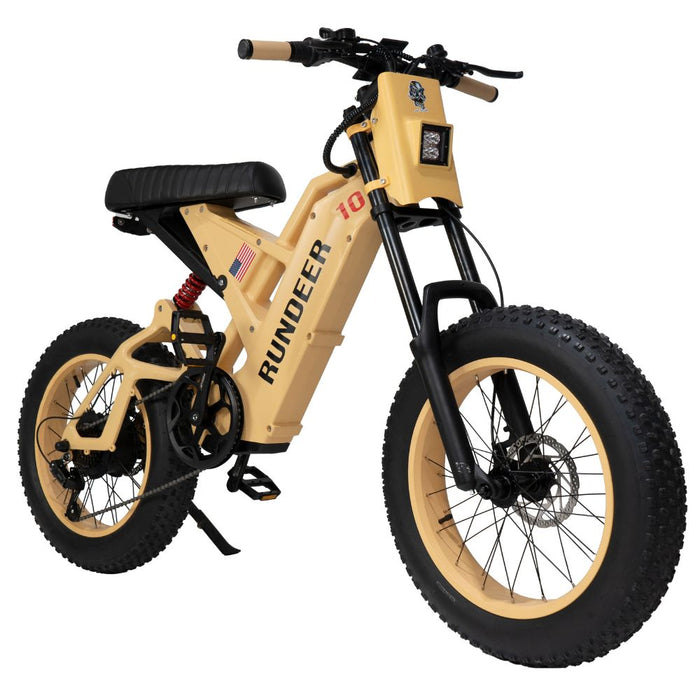Unleash Adventure: Discover the Hidden Perks of Electric Mountain Bikes!
As outdoor adventures continue to gain traction among enthusiasts, the introduction of electric mountain bikes has revolutionized the way we explore nature. Picture tackling rugged trails, steep climbs, and winding paths without the same level of exhaustion that traditional biking often brings. Electric mountain bikes, or e-MTBs, are becoming increasingly popular as they seamlessly blend cutting-edge technology with the thrill of mountain biking. Whether you're a seasoned pro or a beginner eager to explore the great outdoors, these bikes offer an exciting way to enhance your riding experience. In this article, we will delve into the numerous benefits and features of electric mountain bikes, uncovering what makes them a must-try for any adventure seeker.

Understanding Electric Mountain Bikes
Electric mountain bikes are a sophisticated fusion of traditional mountain biking and modern electric technology. At their core, these bikes integrate an electric motor with a conventional bicycle structure, allowing riders to enjoy the thrill of mountain biking while receiving assistance from a battery-powered motor. The main components include a motor, which provides pedal assistance, a rechargeable battery that powers the motor, and controls that allow riders to adjust the level of assistance based on their needs. The motor typically sits in the rear hub or is integrated into the frame, ensuring a balanced ride. The battery, often mounted on the downtube, can vary in capacity, influencing the bike's range and overall performance. These elements work together to create a unique riding experience that offers the best of both worlds: the physical challenge of biking combined with the support of electric assistance.
Benefits of Electric Mountain Bikes
One of the most significant advantages of electric mountain bikes is their ability to make mountain biking accessible to a broader range of riders. Whether you're new to the sport or coming back after a long break, e-MTBs empower you to tackle challenging terrains that you might have previously deemed too difficult. The electric assist feature helps reduce fatigue, allowing you to ride longer and explore more without wearing yourself out. For instance, I remember my friend Sarah, who had always admired mountain biking from afar but felt intimidated by the steep hills. After trying an electric mountain bike, she was amazed at how much easier it was to conquer those climbs and enjoy the beautiful scenery around her. Additionally, these bikes can help level the playing field, enabling riders of different skill levels to ride together comfortably, fostering camaraderie and shared experiences on the trails.
Key Features to Look For
When considering an electric mountain bike, there are several essential features to keep in mind. Battery life is paramount, as it determines how far you can travel on a single charge. Look for bikes with high-capacity batteries that offer a good range for your intended rides. Motor power is equally important; a more powerful motor can provide better assistance on steep climbs. Weight also plays a significant role in ride quality, as lighter bikes are easier to handle and maneuver on tough trails. Lastly, suspension systems can greatly affect comfort and control; a good suspension helps absorb shocks and provides a smoother ride over rough terrain. By evaluating these key features, you can select an electric mountain bike that meets your specific needs and enhances your riding experience.
The Technology Behind Electric Mountain Bikes
The technology that underpins electric mountain bikes is continually evolving, making them more efficient and enjoyable to ride. Modern battery technology has advanced significantly, with many e-MTBs now featuring lithium-ion batteries that provide longer life and faster charging times. Regenerative braking is another innovative feature found in some models, allowing the motor to recharge the battery while slowing down, enhancing overall efficiency. Additionally, smart systems are being integrated into these bikes, offering riders real-time data on speed, distance, and battery life. Some bikes even come equipped with GPS and connectivity options, enabling riders to plan their routes and share their adventures with friends. This integration of technology not only enhances the riding experience but also promotes safety and convenience on the trails.
Enhancing Your Riding Experience with Electric Mountain Bikes
In summary, electric mountain bikes present an exciting opportunity for outdoor enthusiasts to enhance their riding experience. With their unique blend of traditional biking and cutting-edge technology, e-MTBs make mountain biking accessible to riders of all skill levels, allowing them to conquer challenging terrains and enjoy longer rides without the same level of fatigue. When choosing an electric mountain bike, it's essential to consider key features like battery life, motor power, and suspension systems to find the perfect fit for your adventure needs. As you explore the trails, you'll discover that an electric mountain bike can transform your outdoor experiences, offering endless possibilities for adventure and fun. So why not consider adding one to your gear for your next ride?


